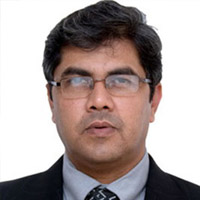

In January of 2019, with a sudden move that is by now characteristic of the Modi government’s policy making strategy, a 10 per cent reservation was announced. It was for everyone, who could prove they are poor. A reservation for all, the logic was difficult to digest. World over, affirmative action is taken for who fight acute forms of marginalisation and distress. Here the government was giving reservation to everyone who was poor. The law does not allow for it. In the famous Indira Sawhney Vs Union of India judgement of 1992, the Supreme Court had ruled that reservations could not be granted solely on economic criteria. The same judgement had also imposed a 50% ceiling on reservations.
This EWS quota fell foul on both counts as most states had already reached close to the 50% limit with Tamil Nadu leading the pack at 69%. Hence the need for a Constitutional amendment that would make it legitimate to give reservations to all upper caste groups. Education and employment are subjects in the concurrent list; hence even though the central government passed the law, the states have the choice to ratify this quota. Presently Bihar, Chattisgarh, Delhi, Goa, Gujarat, Haryana, Punjab, Himachal Pradesh, Jharkhand, Kerala, Madhya Pradesh, Rajasthan, Uttar Pradesh, Uttarakhand and West Bengal have adopted this quota. Rajasthan opted to adopt the Rs 8 lakh income limit as the sole determinant and discard the order’s property restrictions. Maharashtra wants to extend the EWS benefits to Marathas only. Tamil Nadu Government already accords 69% reservation, covering OBCs, Most Backward Classes (MBCs), Backward Classes and other special categories of people. The Telangana Government has now announced its decision to introduce 10% EWS quota in Government jobs and educational institutes.
The central government’s rationale for choosing Rs 8 lakhs as the income threshold has been that income is the sole identifier of economically disadvantaged groups. Of course, there is no clear explanation that has been given for why Rs 8 lakh rupee cap. Given the income distribution in the country, almost 95 percent of the population falls under this cap, making this a futile reservation where everyone is eligible. To obtain an EWS certificate, beneficiaries must have a household income less than Rs 8 lakh annually. Land ownership also limits this quota again failing to note that more than 95% of landowners in the country are small and marginal farmers.
The EWS reservations are over and above the existing 50% reservations meant for socially backward classes. These reservations are intended for those citizens not covered under any other reservation policy in the country, which means the upper caste, the privileged among the backward castes and some minorities shall be included. The definition of the EWS has always been a contentious one. While the group generally refers to those below the poverty line, there are multiple definitions for EWS in India. States and UTs have established their independent standards while granting EWS status for different schemes. For instance, Section 2(e) of the Right to Education Act, empowers the state to determine the income limit for EWS category eligible for reservations. Rajasthan has kept Rs 1 lakh as annual income limit for the EWS category; however, Andhra Pradesh has capped it at Rs 60,000. Moreover, the Sinho Commission in 2010 believed that economic status varies over time and affirmative action be extended out to only socially and educationally backward groups. The Rs 8 lakhs cap is bound to conflict with other schemes running for EWS in different states.
Interest subsidy for housing the urban poor was started in 2009 to make housing affordable to the EWS group. The EWS categorisation developed initially was altered later based on the criteria of per capita incomes, monthly expenditure, minimum wages for an agricultural worker, residential price index, and the consumer price index. This approach for establishing the EWS quota seemed far more scientific than the current arbitrary categorisation. Political analysts have claimed that this was a move that followed the flop move to remove all forms of reservations, something that the top Hindutva think tanks have been arguing for over decades. Unable to comply with this pressure towards removing reservations, the ruling coalition apparently decided to take the next best route – give reservations to all.
The cut-off income limit of Rs 8 lakh is exceptionally high. Even for a family of 4, this amounts to US $7.50 a day. The World Bank pegs its poverty line at US $1.90 a day, and the Asian Development Bank sets it at US $1.51. The Tendulkar method on Mixed Reference Period pegged India’s poverty line in rural areas at Rs 26 a day and Rs 33 a day in urban areas , which amounted to 22% poor in the country in 2011.The EWS criterion of Rs 8 lakhs or Rs 66,000 per month (approx) designates a huge proportion of the country as poor.
A study based on the National Family Health Survey and India Human Development Survey data revealed that the average annual income of a household in India is Rs.113, 222 or Rs. 9, 435 per month. The study also concluded that the annual income of ST and SC groups is 0.7 times and 0.8 times lower than the all-India average income. For Muslims and OBCs, the annual income is 0.9 times the all-India average annual income, while for the forward castes the income level is about 1.4 times the all-India average income.
However, under this new quota, SCs, STs and OBCs have been denied economic reservations, which is bizarre given that it would violate the right to equality of opportunity and deny equity in affirmative action.
The 10% quota for the EWS, therefore, comes across as impulsive, unplanned and illogical. The directive violates legal sanctity, principles of equality and misrepresents poverty as a historical injustice. The failure of poverty alleviation programs, policymaking and bureaucratic vision in combating poverty cannot be compensated with piecemeal offerings. While the upper-class may be well appeased with the move, the quota will substantially reduce meritorious posts and seats in educational institutions. Given the large income bracket, the policy shall even fail to target the poorest of the poor. The EWS reservation is more about entertaining populism than about enhancing opportunities for the economically disadvantaged.
Amir Ullah Khan and Nahia Hussain are researchers at Centre for Development Policy and Practice (CDPP) based in Hyderabad.

